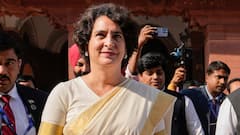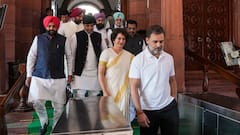Economic growth higher during NDA: NITI Aayog VC

New Delhi [India], August 18 (ANI): Dismissing reports about higher economic growth during the UPA Government's regime, NITI Aayog Vice-Chairman Rajiv Kumar on Saturday said that the economic growth or Gross Domestic Product under Narendra Modi government has been higher than previous governments. He added that in the past four years strong foundations have been laid for "sustained high and inclusionary growth" for the future.
"Growth rate under four years of Modi government is still higher than the growth rate of last four years of UPA. This is being managed despite the pernicious legacy of massive NPAs, de- leveraging of commercial bank credit and uncertain global trade environment," Kumar said on Twitter.
Referring to a report by sub-committee of the National Statistical Commission (NSC) on real sector statistics which reportedly claimed that going by revised GDP measures, the economic growth touched double digits -- 10 per cent -- during UPAs rule in 2006-07, Kumar in a series of tweets tried to clear air about these figures.
It was reported in a section of media that according to a report of NSC sub-committee, the average economic growth rate was 8.87 per cent during UPA's first term in 2004-09. This fell to 7.39 per cent during its second term in 2009-14. The report further claimed that in comparison to the UPA, the average growth rate during NDA's first four years (2014-18) was 7.35 per cent.
"Reference this morning's news report about NSC sub-committee's estimates of GDP growth series with 2011-12 base. These are yet unofficial. However, the following facts are clear: Higher growth rate in 2009-2011 and in previous years was funded by untenable fiscal deficit and reckless expansion of commercial bank credit which was surely unsustainable. This led to a dramatic economic collapse and growth floundered spectacularly in last 3 years of UPA II," Kumar said.
He added that this reflected in Mundle Committee's estimates of the back series as well. "7.05 per cent in 2011-12; 5.42 per cent in 2012-13; and 6.05 per cent in 2013-14. India was branded as part of the Fragile 5. Rupee's exchange rate went into a free fall during May-August 2013, declining almost 25 per cent in 4 months," he tweeted.
He also pointed out that the highest ever growth rate during 1987-89 Rajiv Gandhi period was also debt funded and led to the disastrous collapse of economic growth in 1990-92. "Likewise, highest ever growth rate during 1987-89 Rajiv Gandhi period was also debt funded and led to disastrous collapse of growth in 1990-92 and the unmitigated external account crisis that forced India to physically transfer its gold reserves to avoid a debt service default," Kumar said.
(ANI)
This story has not been edited. It has been published as provided by ANI
Trending News
Top Headlines






































